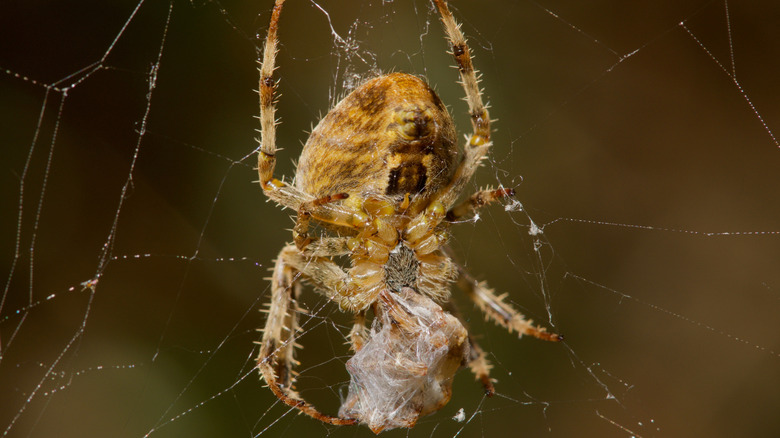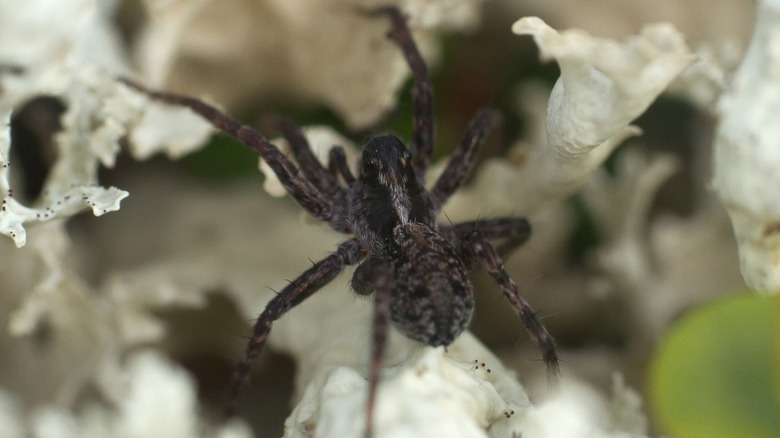A Spider Species Is Turning To Cannibalism, And The Reason Might Come As A Surprise
Believe it or not, several animal species are cannibalistic, but spiders are some of the most notorious. Female black widow spiders are particularly well known for eating the males during and after mating, while crab spider babies eat their mothers to guarantee their survival. Cannibalism may be common among these and other species, but it has become a relatively new development among the wolf spider.
Rather than spinning a web (a classic spider adaptation) to trap its food, wolf spiders like to hunt their prey, which includes small insects like ants, crickets, earwigs, flies, and grasshoppers. Resorting to cannibalism, though, has become more common among these spiders in Alaska's Arctic Circle, according to research published in the Journal of Animal Ecology. Amanda Koltz, the study's lead author, told the Washington University newsroom, "Although cannibalism is probably not the best dietary choice for these spiders, our field and experimental data suggest that when there are lots of spiders around, they turn to cannibalism more frequently."
The problem, she added, is that "evidence from other studies has shown that wolf spiders that are only fed other wolf spiders don't live as long as those that eat a more varied diet," which could have a widespread, negative impact on the environment. While this study was based in the Alaskan Arctic and looked specifically at wolf spiders, Koltz noted that this increase in cannibalism isn't limited to just Alaska or wolf spiders.
Why wolf spiders (and other species) are eating each other
The results of the Alaskan Arctic study have led the researchers to conclude that climate change is likely at the root of wolf spiders (and other species around the world) resorting to cannibalism. In fact, the biologists believe that it's part of a ripple effect that impacts spiders as a whole since they externally regulate their body temperatures.
Koltz and coauthor Justin Wright observed two Alaskan Arctic sites of wolf spiders and noticed that they were bigger in size the years after summers were long and warm compared to usual. Additionally, they surmised that, as the females grew larger, so did the number of offspring that they produced. Logic would have you believe that more baby spiders would result in an increase in the spider population overall. Instead, the young spiders aren't surviving into adulthood because they're being eaten by their own. And, it's not because of the natural predators of the wolf spider but because of competition among them for resources.
Koltz compared the field study with a controlled experiment, during which she found that higher spider densities were associated with larger female wolf spiders and fewer juveniles. "Wolf spiders that were experimentally exposed to higher densities underwent a dietary shift similar to that of the field population where females were bigger — and where we would expect competition and cannibalism among wolf spiders to be highest."

